-
 Bitcoin
Bitcoin $118300
-0.58% -
 Ethereum
Ethereum $3825
0.11% -
 XRP
XRP $3.137
-0.71% -
 Tether USDt
Tether USDt $0.9999
-0.01% -
 BNB
BNB $803.9
-3.37% -
 Solana
Solana $181.5
-1.94% -
 USDC
USDC $0.9999
0.01% -
 Dogecoin
Dogecoin $0.2238
-2.51% -
 TRON
TRON $0.3358
2.12% -
 Cardano
Cardano $0.7844
-2.16% -
 Hyperliquid
Hyperliquid $43.31
-1.48% -
 Sui
Sui $3.807
-4.04% -
 Stellar
Stellar $0.4203
-1.96% -
 Chainlink
Chainlink $17.79
-3.00% -
 Bitcoin Cash
Bitcoin Cash $567.8
-1.34% -
 Hedera
Hedera $0.2614
-4.30% -
 Avalanche
Avalanche $24.19
-4.46% -
 Litecoin
Litecoin $109.2
-0.74% -
 UNUS SED LEO
UNUS SED LEO $8.969
-0.01% -
 Toncoin
Toncoin $3.404
3.97% -
 Ethena USDe
Ethena USDe $1.001
-0.01% -
 Shiba Inu
Shiba Inu $0.00001307
-3.19% -
 Uniswap
Uniswap $10.33
-1.23% -
 Polkadot
Polkadot $3.884
-4.06% -
 Monero
Monero $312.9
-1.87% -
 Dai
Dai $1.000
0.01% -
 Bitget Token
Bitget Token $4.537
-2.24% -
 Pepe
Pepe $0.00001156
-3.40% -
 Cronos
Cronos $0.1437
-0.89% -
 Aave
Aave $282.8
-2.77%
How reliable is it for the KDJ indicator to form a golden cross near the 50 axis?
A KDJ golden cross near the 50 level signals potential bullish momentum, especially when confirmed by volume, trend, and other indicators like RSI or MACD.
Jul 29, 2025 at 05:21 am
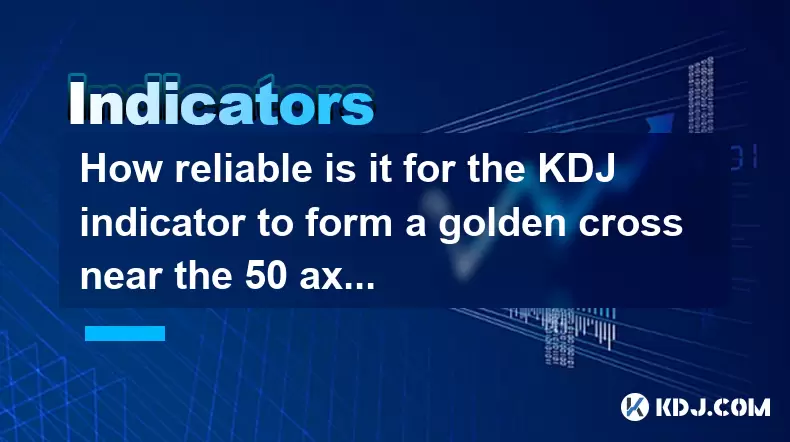
Understanding the KDJ Indicator and Its Components
The KDJ indicator is a momentum oscillator widely used in cryptocurrency technical analysis to identify potential buy and sell signals. It consists of three lines: the %K line, the %D line, and the %J line. The %K line reflects the current closing price relative to the price range over a specified period, typically 9 periods. The %D line is a moving average of %K, usually calculated over 3 periods, making it smoother. The %J line is derived from the formula: J = 3 × %K – 2 × %D, which makes it more sensitive and volatile.
The KDJ operates within a 0 to 100 range. Values below 20 are considered oversold, while values above 80 indicate overbought conditions. The 50 level is a neutral midpoint, often interpreted as a balance between bullish and bearish momentum. When the %K line crosses above the %D line near this 50 axis, it forms what is known as a golden cross. Traders interpret this as a potential bullish signal, suggesting a shift in momentum from bearish to bullish.
What Does a Golden Cross Near the 50 Axis Indicate?
A golden cross occurs when the %K line rises and intersects the %D line from below. When this happens near the 50 axis, it suggests that momentum is transitioning into a neutral-to-bullish zone. Unlike golden crosses in oversold regions (below 20), which are often seen as stronger reversal signals, those near 50 may indicate continuation of an uptrend or a consolidation breakout rather than a deep reversal.
In the context of cryptocurrency markets, where volatility is high and trends can shift rapidly, a golden cross near 50 might reflect short-term bullish sentiment rather than a long-term reversal. This signal is more reliable when confirmed by other technical indicators such as volume spikes, moving averages, or support/resistance breaks. For instance, if the price is approaching a key resistance level and the KDJ forms a golden cross near 50, it may suggest increased buying pressure that could push the price higher.
How to Confirm the Reliability of the Signal
To assess the reliability of a KDJ golden cross near 50, traders should incorporate multi-indicator confirmation. Consider the following steps:
- Check the price trend: Ensure the asset is in an upward trajectory or consolidating within a bullish pattern. A golden cross in a downtrend may be a false signal.
- Monitor volume: A surge in trading volume during the cross increases the signal’s credibility. Low volume may indicate weak participation.
- Cross-reference with moving averages: If the price is above the 50-day or 200-day moving average, the bullish signal gains strength.
- Use RSI or MACD: If the Relative Strength Index (RSI) is rising from 50 or the MACD shows a bullish crossover, it reinforces the KDJ signal.
Additionally, applying the KDJ on multiple timeframes (e.g., 4-hour and daily charts) can help filter out noise. A golden cross appearing on both timeframes near 50 is more trustworthy than one on a single, lower timeframe.
Practical Steps to Trade Based on This Signal
Executing a trade based on a KDJ golden cross near 50 requires precision and risk management. Follow these steps carefully:
- Set up your charting platform: Use platforms like TradingView or Binance Trading Tools. Add the KDJ indicator with default settings (9,3,3).
- Identify the cross: Wait for the %K line to cross above the %D line when both are near the 50 level. Avoid acting on crosses far from this zone.
- Verify price action: Look for bullish candlestick patterns such as engulfing or hammer formations at support levels.
- Place entry order: Enter a long position after the cross is confirmed and the next candle closes higher.
- Set stop-loss: Place the stop-loss just below the recent swing low or below the %D line to limit downside risk.
- Define take-profit levels: Use Fibonacci extensions or previous resistance levels as profit targets. Alternatively, exit when the KDJ enters overbought territory (above 80).
Always use position sizing to ensure no single trade risks more than 1–2% of your capital. Backtesting this strategy on historical data can reveal its effectiveness across different crypto assets like Bitcoin, Ethereum, or altcoins.
Common Pitfalls and How to Avoid Them
While the KDJ golden cross near 50 can be useful, it is prone to false signals, especially in sideways or choppy markets. Cryptocurrency prices often experience whipsaws, where the indicator generates a cross that quickly reverses. To mitigate this:
- Avoid trading during low volatility periods: Use the Average True Range (ATR) to assess market activity. Low ATR values suggest reduced momentum, making the signal less reliable.
- Filter with trend indicators: Only act on golden crosses when the price is above a key moving average, such as the 50 EMA.
- Be cautious in overbought zones: If the J line is already above 80 before the cross, it may indicate exhaustion rather than strength.
- Don’t rely solely on KDJ: Combine it with support/resistance analysis or order book data from exchanges to confirm institutional interest.
Another common mistake is overtrading based on every KDJ cross. Discipline is essential—wait for high-probability setups with clear confluence.
Frequently Asked Questions
Can the KDJ golden cross near 50 be used in bear markets?
Yes, but with caution. In a bear market, such crosses often represent temporary rallies or dead cat bounces rather than sustained reversals. Always assess the broader trend using tools like weekly charts or on-chain metrics before acting.
Is the KDJ more reliable on higher timeframes?
Generally, yes. Signals on the 4-hour or daily charts are more reliable than those on 5-minute or 15-minute charts due to reduced noise and stronger confirmation from institutional activity.
How do I adjust KDJ settings for different cryptocurrencies?
While the default (9,3,3) works for most cases, volatile altcoins may benefit from smoothing—try (14,3,3). Backtest adjustments on historical data to find optimal parameters for assets like Solana or Cardano.
Does the KDJ work well with leverage trading?
It can, but increased risk demands stricter confirmation. Use KDJ signals in conjunction with liquidation heatmap analysis and funding rates to avoid entering leveraged longs during squeeze-prone conditions.
Disclaimer:info@kdj.com
The information provided is not trading advice. kdj.com does not assume any responsibility for any investments made based on the information provided in this article. Cryptocurrencies are highly volatile and it is highly recommended that you invest with caution after thorough research!
If you believe that the content used on this website infringes your copyright, please contact us immediately (info@kdj.com) and we will delete it promptly.
- PENGU Price Plunge? Binance Transfers and Token Transfer Trends
- 2025-07-30 23:10:15
- Navigating Crypto Investment: Bitcoin Mining and the Rise of Cloud Mining in the Big Apple
- 2025-07-30 22:31:15
- Meme Coins, Profit, and Investment: Riding the Crypto Wave in Style
- 2025-07-30 23:10:15
- LivLive's Gamified AR Launch Phase: Level Up Your Reality!
- 2025-07-30 22:31:15
- Bitcoin, Crypto, and the Golden Age: Navigating the Future of Digital Assets
- 2025-07-31 00:10:14
- JPMorgan, Coinbase, and Crypto Access: A New Era for Digital Finance?
- 2025-07-30 22:50:13
Related knowledge
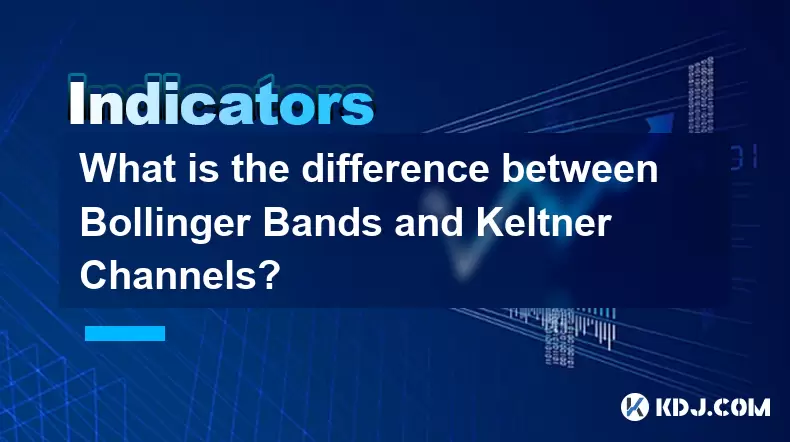
What is the difference between Bollinger Bands and Keltner Channels?
Jul 30,2025 at 11:30pm
Understanding Bollinger Bands and Their Core ComponentsBollinger Bands are a widely used technical analysis tool developed by John Bollinger in the 19...
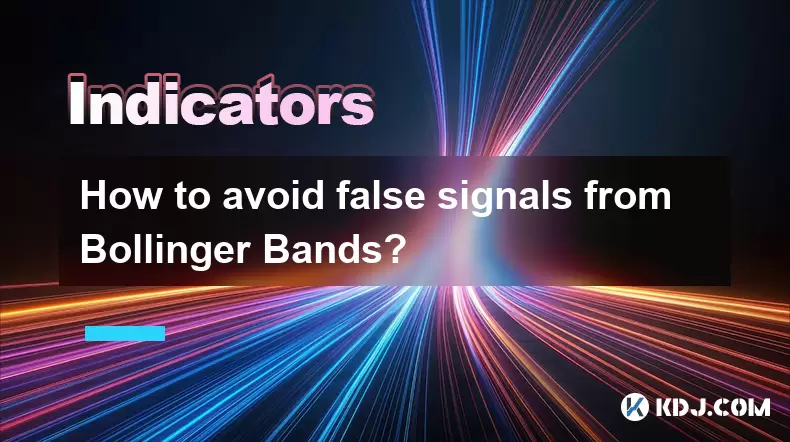
How to avoid false signals from Bollinger Bands?
Jul 30,2025 at 11:42pm
Understanding Bollinger Bands and Their Core ComponentsBollinger Bands are a widely used technical analysis tool developed by John Bollinger in the 19...
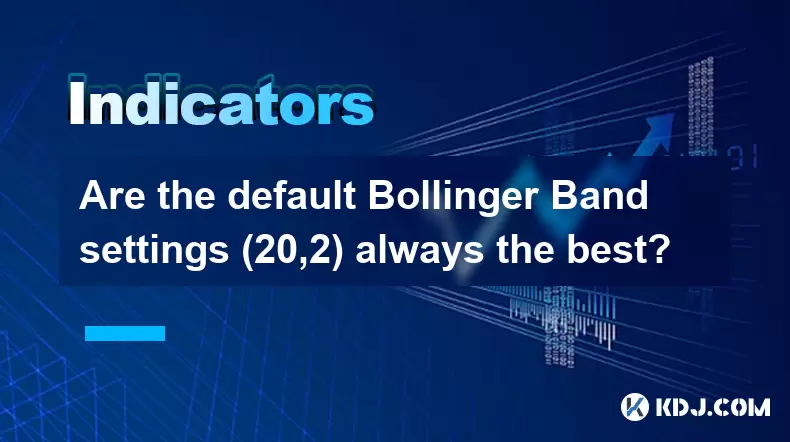
Are the default Bollinger Band settings (20,2) always the best?
Jul 30,2025 at 11:36pm
Understanding the Standard Bollinger Band ConfigurationThe default Bollinger Band settings of (20,2) are widely used across the cryptocurrency trading...
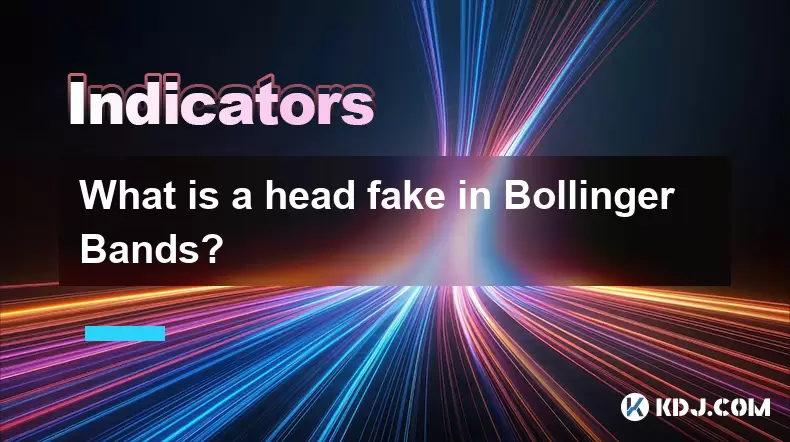
What is a head fake in Bollinger Bands?
Jul 30,2025 at 09:44pm
Understanding Bollinger Bands and Their StructureBollinger Bands are a widely used technical analysis tool developed by John Bollinger in the 1980s. T...
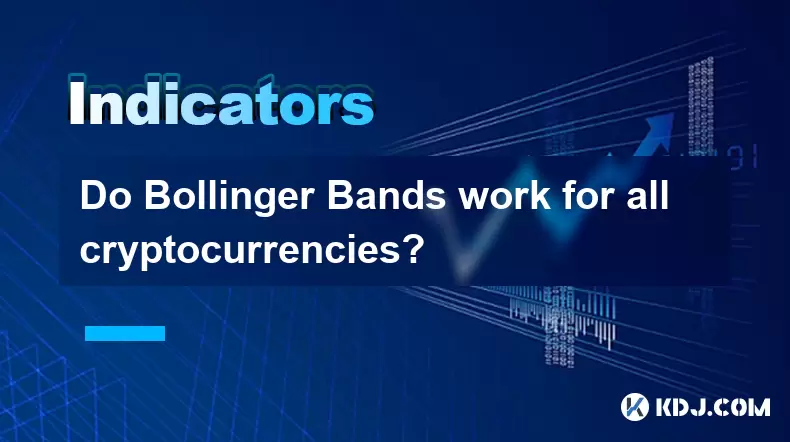
Do Bollinger Bands work for all cryptocurrencies?
Jul 30,2025 at 09:30pm
Understanding Bollinger Bands in Cryptocurrency TradingBollinger Bands are a widely used technical analysis tool developed by John Bollinger in the 19...
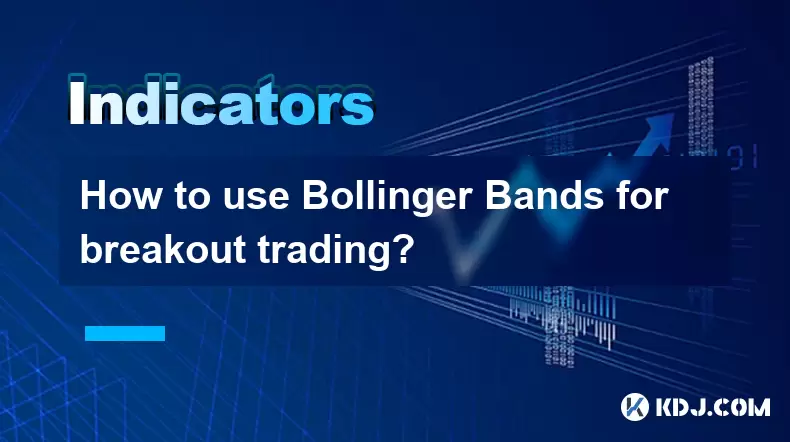
How to use Bollinger Bands for breakout trading?
Jul 30,2025 at 10:27pm
Understanding Bollinger Bands and Their ComponentsBollinger Bands are a widely used technical analysis tool developed by John Bollinger in the 1980s. ...

What is the difference between Bollinger Bands and Keltner Channels?
Jul 30,2025 at 11:30pm
Understanding Bollinger Bands and Their Core ComponentsBollinger Bands are a widely used technical analysis tool developed by John Bollinger in the 19...

How to avoid false signals from Bollinger Bands?
Jul 30,2025 at 11:42pm
Understanding Bollinger Bands and Their Core ComponentsBollinger Bands are a widely used technical analysis tool developed by John Bollinger in the 19...

Are the default Bollinger Band settings (20,2) always the best?
Jul 30,2025 at 11:36pm
Understanding the Standard Bollinger Band ConfigurationThe default Bollinger Band settings of (20,2) are widely used across the cryptocurrency trading...

What is a head fake in Bollinger Bands?
Jul 30,2025 at 09:44pm
Understanding Bollinger Bands and Their StructureBollinger Bands are a widely used technical analysis tool developed by John Bollinger in the 1980s. T...

Do Bollinger Bands work for all cryptocurrencies?
Jul 30,2025 at 09:30pm
Understanding Bollinger Bands in Cryptocurrency TradingBollinger Bands are a widely used technical analysis tool developed by John Bollinger in the 19...

How to use Bollinger Bands for breakout trading?
Jul 30,2025 at 10:27pm
Understanding Bollinger Bands and Their ComponentsBollinger Bands are a widely used technical analysis tool developed by John Bollinger in the 1980s. ...
See all articles

























































































